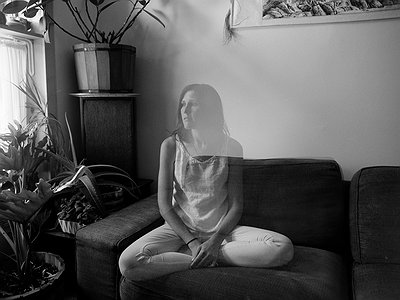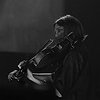Part 1
Name: Whitney Johnson
Nationality: American
Occupation: Musician/Professor
Current Release/Label: Sacracorpa on Trouble in Mind
Recommendation: Ben Lamar Gay’s Downtown Castles Can Never Block the Sun / Eliane Radigue’s Adnos I-III
Website / Contact: If you enjoyed this interview with Matchess, visit her website matchess.tumblr.com
When did you start writing/producing music - and what or who were your early passions and influences? What is it about music and/or sound that drew you to it?
The starting point is hard to say. As children, the difference between song and speech is indiscrete. Instrumental music drew me to the existence of sound beyond language and narrative. Although my senses were fully engaged, I found freedom in the possibility of music with nothing to say and without a story to tell.
For most artists, originality is first preceded by a phase of learning and, often, emulating others. How would you describe your own development as an artist and the transition towards your own voice? What is the relationship between copying, learning and your own creativity?
Technical training on the viola is all about emulating teachers, composers’ guidelines, and other performers’ interpretations. I spent many years only performing other people’s compositions, keeping mine to myself. It wasn’t until my early 20s that I found my own compositional voice, but even then it took time to build the confidence to use it.
What were your main compositional- and production-challenges in the beginning and how have they changed over time?
In the beginning, I remember feeling overwhelmed with possibilities: instruments, voicing, styles, techniques. It was important to me at that time to set boundaries for myself, and I chose to work with the limited sonic palette of viola, Ace Tone combo organ, a simple drum machine, and effect pedals. My first solo tape was recorded directly to the internal mic of a cassette recorder! Things have changed.
What was your first studio like? How and for what reasons has your set-up evolved over the years and what are currently some of the most important pieces of gear for you?
My recording set up remains very simple, maximizing freedom of motion. I have a stereo interface into my DAW, and I can bring it anywhere. My last record was recorded at my grandmother’s farmhouse in Curwensville, Pennsylvania, at my studio in Chicago, at an apartment in Greenwich Village, and a little bit at an earth ship outside Abiquiú, New Mexico. The simple set up allows me to capture field recordings and to track pieces of songs wherever I travel. So, in that sense, my most important piece of gear, other than my instruments, is that Tascam 2-channel interface.
How do you make use of technology? In terms of the feedback mechanism between technology and creativity, what do humans excel at, what do machines excel at?
Obsolete technology speaks for itself. The medium is the message! I use reel-to-reel tape machines—some functional, some not—to add splashes of randomness to my recording process. Machines are non-human actors in the production of sound, so I have to make sure we are vibrating on the same wavelength before collaborating. That said, I don’t want fear to keep me from learning new technology, and I’m always trying to balance the learning curve against the potential offering of a new machine.
Production tools, from instruments to complex software environments, contribute to the compositional process. How does this manifest itself in your work? Can you describe the co-authorship between yourself and your tools?
My viola is as much the author of Matchess as myself. The instrument affords a range of frequencies, amplitudes, and timbres, and I try to allow the instrument to do what it does best. I’m not particularly drawn to extended techniques. The viola has a long and incisive design history, and if necessary I would prefer to use new instruments suited to newer techniques.
Collaborations can take on many forms. What role do they play in your approach and what are your preferred ways of engaging with other creatives through, for example, file sharing, jamming or just talking about ideas?
I love to collaborate! Matchess is a collaboration between myself and a select few instruments, but outside that project I relish the freedom to improvise with others, particularly femme artists. I have ongoing collaborations with Haley Fohr, Lulu Callier, Natalie Chami, Whitney Allen, and Lia Kohl to name just a few. We bring different things out of one another, and just like the viola, I hope we make space to each do what we do best.
Could you take us through a day in your life, from a possible morning routine through to your work? Do you have a fixed schedule? How do music and other aspects of your life feed back into each other - do you separate them or instead try to make them blend seamlessly?
I am living a double life. In one life I’m a musician, along with all the actual music-making and paper pushing that entails. In the other life I’m a sociologist of sound, writing and teaching about social theories of hearing and listening. Although I’m drawn to routines, I’m not great at keeping them. My ideal day would include water, free writing, calisthenics, and an inversion in the morning. I supplement my diet with ashwagandha, ginseng, and ginkgo. Throughout the day, I play music, listen to music, write, read, and jog. At night, I like to eat ice cream. But, of course, that is my ideal day. In reality, I spend a lot of time on computers.






